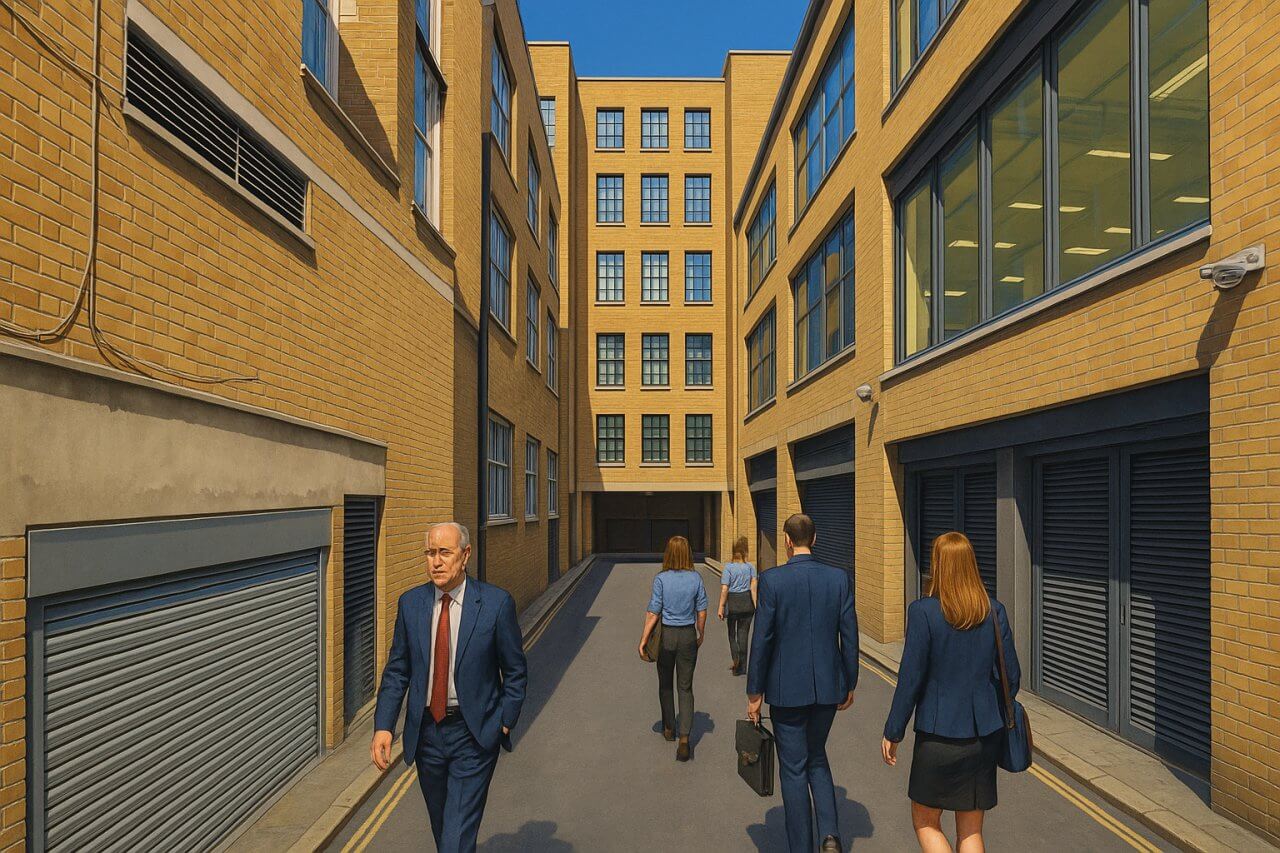
Apple Tree Yard, London
Apple Tree Yard is a small and secluded cul-de-sac nestled in the heart of St James’s, within the City of Westminster. Situated just east of Ormond Yard and accessed via Duke of York Street, it lies behind the elegant facades of Jermyn Street, one of London’s most refined shopping and gentlemen’s tailoring destinations. Despite the name, visitors won’t find any apple trees growing there today, but the yard remains rich in history and quiet charm.
Description and Layout
The street is modest in size, measuring approximately 90 metres (295 feet) in length. It serves as a one-way street, with vehicles typically entering from Duke of York Street and exiting into Ormond Yard. The narrow roadway, flanked by historic buildings, has a cobbled character and is generally calm, with little vehicular traffic due to its enclosed and private nature.
Historical Background
Apple Tree Yard likely dates to the late 17th or early 18th century, aligning with the broader development of the St James’s district. Originally part of the backyards and service areas behind grander homes and businesses on Jermyn Street, it was a functional thoroughfare in a bustling district closely associated with aristocratic residences and elite clubs.
The origin of the name “Apple Tree Yard” is not officially documented, but it is presumed that the name refers to the existence of one or more apple trees on the premises when the area was first laid out. The reference may have been more symbolic than practical, possibly suggesting a picturesque or quaint aspect to the yard. Today, no apple trees remain in sight, and the space is urbanised and developed.
Character and Atmosphere
Discreet, refined, and almost hidden, Apple Tree Yard carries the air of a place that has deliberately stayed under the radar. It’s surrounded by quiet private offices, mews-style residential conversions, and back entrances to larger buildings on adjacent streets. The yard feels distinctly different from the commercial buzz of Jermyn Street mere steps away, offering instead a tucked-away, almost secretive vibe.
Notable Nearby Landmarks
- St James’s Church, Piccadilly – A Christopher Wren-designed church located just around the corner on Piccadilly.
- The Royal Academy of Arts – A world-class cultural institution only a few minutes’ walk away.
- Jermyn Street – Known for high-end menswear, fine perfumers, and historical relevance.
- Pall Mall and St James's Square – Iconic addresses representing London's aristocratic past.
Real Estate and Property Values
Property in and around Apple Tree Yard reflects the exclusivity of the St James’s area. Real estate here is typically commercial or residential with mews-style conversions. As of 2025, commercial office spaces in the vicinity command rates of approximately £2,000–£2,500 per square metre annually, depending on the building and lease conditions. Residential property prices in adjacent areas like Duke of York Street or Ormond Yard average around £2,500–£3,000 per square foot (£26,910–£32,290 per sq metre)1.
Units, where available, tend to be compact luxury flats or townhouses of approximately 1,000–1,800 square feet (93–167 sq metres), catering to wealthy individuals seeking a central pied-à-terre or discrete urban residence.
Transport Links
Nearest London Underground Stations
- Green Park Station – Served by the Jubilee, Piccadilly, and Victoria lines. A 6-minute walk west via Piccadilly.
- Piccadilly Circus Station – Served by the Bakerloo and Piccadilly lines. Around 7 minutes away by foot.
- Charing Cross Station – Slightly farther but still within a 10–12 minute walk, offering Bakerloo and Northern line services as well as National Rail connections.
Nearby Bus Stops
The nearest bus stops are located along Piccadilly and Pall Mall. These provide services on routes including:
- Route 9 – To Hammersmith and Aldwych
- Route 14 – To Putney and Warren Street
- Route 19 – To Battersea Bridge and Finsbury Park
Fun Fact
Apple Tree Yard lent its name to a bestselling novel by Louise Doughty, which was later adapted into a BBC One television drama in 2017. The psychological thriller, partly set in and around St James’s, brought a new level of intrigue and recognition to this otherwise hidden location. The book’s themes of secrecy and hidden lives resonated strongly with the secluded character of the actual yard.
Quick Facts
- Location: Behind Jermyn Street, St James’s, City of Westminster, London
- Length: Approx. 90 metres (295 feet)
- Traffic: One-way street from Duke of York Street to Ormond Yard
- History: Laid out in the late 17th or early 18th century
- Name Origin: Likely derived from early apple trees on site; none visible today
- Nearby Sights: Jermyn Street, Royal Academy, St James's Church, Pall Mall
- Property Prices (2025): ~£2,500–£3,000/sq ft for residential; premium commercial rents
- Nearest Tube: Green Park, Piccadilly Circus, Charing Cross
- Bus Routes: 9, 14, 19 via Piccadilly and Pall Mall
- Fun Fact: Inspired the novel and TV drama "Apple Tree Yard" by Louise Doughty
References
Map of Apple Tree Yard, London

Painting of Apple Tree Yard, London (View image in full size)